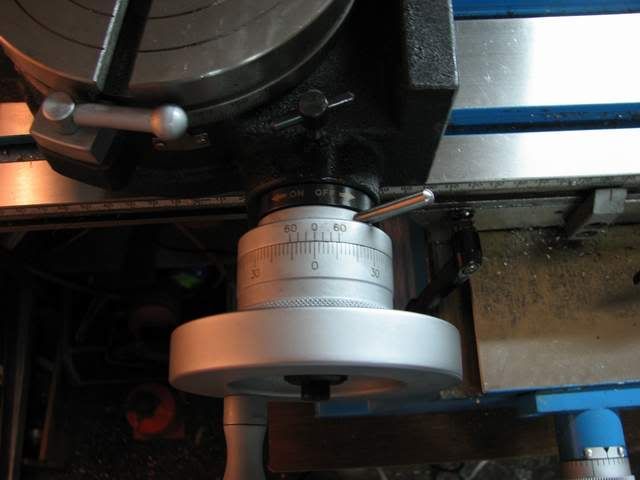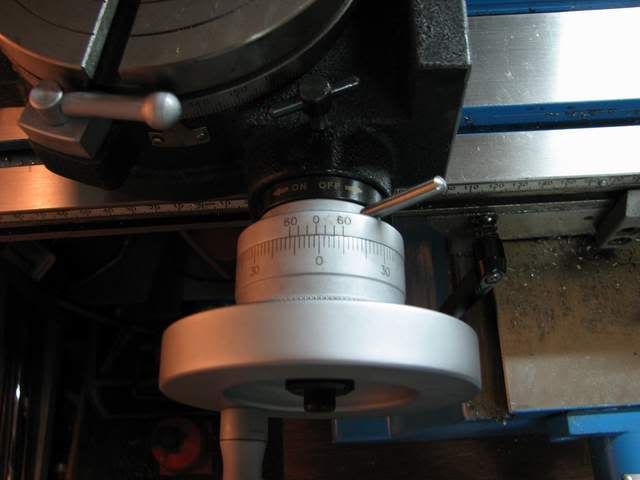Hi all,
Yesterday I went out to buy a rotary table + dividing plate + centre (110 mm diameter).
The seller started inquiring as to whether I intended to do any gearcutting any time soon - which was not the case. Based on that I settled on a one size bigger rotary table (6'' / 150 mm). I think I was glad that he did not immediately sell me what I directly asked for. In all honesty, I expect it will be at least 5 years before I indeed cut any gears.
However, when I got home, I started wondering as to the need for dividing plates. Up to now, I assumed that they were a necessity for getting accurate gears. The way I understand it now (after having studied the table a bit), the real advantage is not the accuracy they provide, but the convenience to ensure you position the table correctly (it offloads your brain so to say), for each tooth position.
The table is geared 90:1, one rev of the dial gives 4 degrees, dial is down to minutes and a nonius (vernier) to ten arcseconds. At the edge of the table (75 mm) therefor the smallest readable dial change amounts to 3.6 micron. Admittedly, I have no idea what accuracy a gear needs - but this is way smaller than at least what I can achieve in positioning two holes w.r.t each other. So that suggests to me that it should be enough for decent gears.
Which leads me to the point that if you are concentrated, you do not need dividing plates.
Is my reasoning correct? If so, anyone out there who was indeed able to do so without messing up?
Moreover, my impression is that it is not very difficult to actually make a dividing plate for a one off job -given that the amount of holes one has to make is typically smaller than the amount of teeth in a typical gear. True or just me jusitifying not buying the dividin plates?
Thanks for any thoughts on the subject.
Henk
Yesterday I went out to buy a rotary table + dividing plate + centre (110 mm diameter).
The seller started inquiring as to whether I intended to do any gearcutting any time soon - which was not the case. Based on that I settled on a one size bigger rotary table (6'' / 150 mm). I think I was glad that he did not immediately sell me what I directly asked for. In all honesty, I expect it will be at least 5 years before I indeed cut any gears.
However, when I got home, I started wondering as to the need for dividing plates. Up to now, I assumed that they were a necessity for getting accurate gears. The way I understand it now (after having studied the table a bit), the real advantage is not the accuracy they provide, but the convenience to ensure you position the table correctly (it offloads your brain so to say), for each tooth position.
The table is geared 90:1, one rev of the dial gives 4 degrees, dial is down to minutes and a nonius (vernier) to ten arcseconds. At the edge of the table (75 mm) therefor the smallest readable dial change amounts to 3.6 micron. Admittedly, I have no idea what accuracy a gear needs - but this is way smaller than at least what I can achieve in positioning two holes w.r.t each other. So that suggests to me that it should be enough for decent gears.
Which leads me to the point that if you are concentrated, you do not need dividing plates.
Is my reasoning correct? If so, anyone out there who was indeed able to do so without messing up?
Moreover, my impression is that it is not very difficult to actually make a dividing plate for a one off job -given that the amount of holes one has to make is typically smaller than the amount of teeth in a typical gear. True or just me jusitifying not buying the dividin plates?
Thanks for any thoughts on the subject.
Henk






